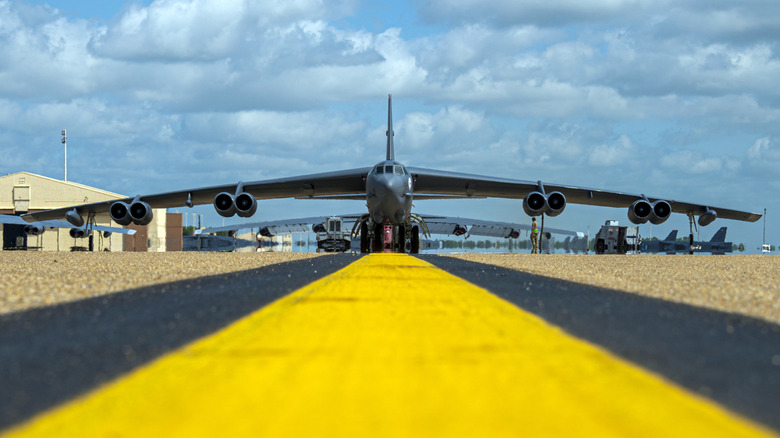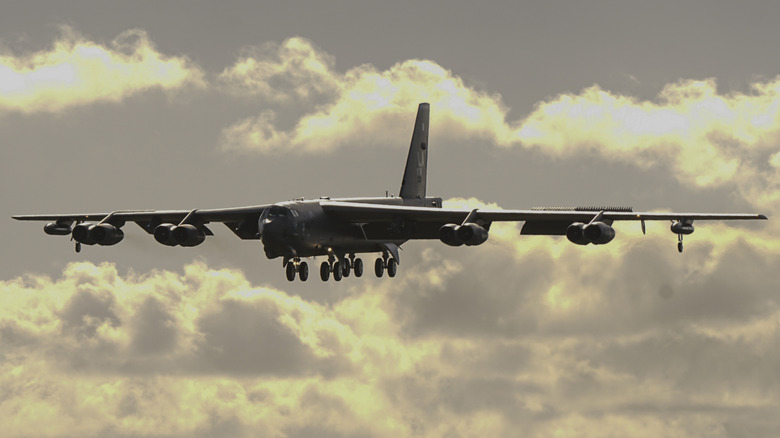Why Does The B-52 Bomber Have Eight Engines?
The Boeing B-52 Stratofortress is a living testament to the saying — if it ain't broken, don't fix it. Boasting a service career that now numbers over seven decades, it is expected to remain in service until the 2050s, potentially making it a 100-year-old aircraft before it finally earns a well-deserved retirement. However, unlike more modern larger aircraft that typically have two or four engines, the B-52 is powered by eight Pratt & Whitney TF33-P-3/103 turbofan engines, each capable of producing 17,000 pounds of thrust. This is a lot of engines and all are needed to power a bomber that has a maximum take-off weight (MTOW) of 244 US tons. However, eight engines might seem like overkill, especially when a modern airliner like the heavyweight Airbus A380 has an MTOW of 575 tons and only has four engines.
The story behind this design is largely due to the age of the aircraft. While the B-52 engines produce 17,000 pounds of thrust each, the four massive Rolls-Royce Trent 900 engines fitted to some A380s are each capable of producing 70,000 pounds of thrust. Indeed, the first iterations of the plane (the B-52A and B-52B) were powered by eight Pratt & Whitney J57 engines, the first turbojet capable of producing 10,000 pounds of thrust. Still, the planes were considered underpowered. Ultimately, it was this lack of power that saw the J57 replaced by the more powerful TF33 in later variants. In short, the B-52 needed eight engines because of the constraints of the engine technology of the age.
Re-engining a legend
To keep the B-52 operational until the 2050s, the United States Air Force decided to re-engine its most iconic plane. While the potential for this has been cited a few times over the years, it wasn't until 2021 that Rolls-Royce was awarded the contract that would effectively keep the old lady flying for another 30 years. However, while this might seem like an opportunity to reduce the number of engines, the contract involves replacing the existing engines with eight Rolls-Royce F-130 engines, in a like-for-like swap — there are sound technological and practical reasons for sticking to this configuration.
Although the use of four larger engines was briefly considered, the technical hurdles of such a move made it impractical. The switch to such a configuration would require major redesigns of critical parts like the wings, cockpit, throttle, and rudder. Additionally, such a change could adversely affect yaw characteristics, ground clearance, and require the need for additional flight testing.
While the re-engining of the B-52s has been delayed by ongoing design issues with the engine inlets, the first upgraded B-52s are still expected to reach operational capability by 2033. The new engines are expected to increase efficiency by 30% and greatly reduce maintenance time. As an example, they have a complete overhaul cycle of around 30,000 hours. This is longer than the expected service hours the planes are due to fly. This is a remarkable plane with the capabilities to ensure that the US continues to fly the B-52 Stratofortress.

